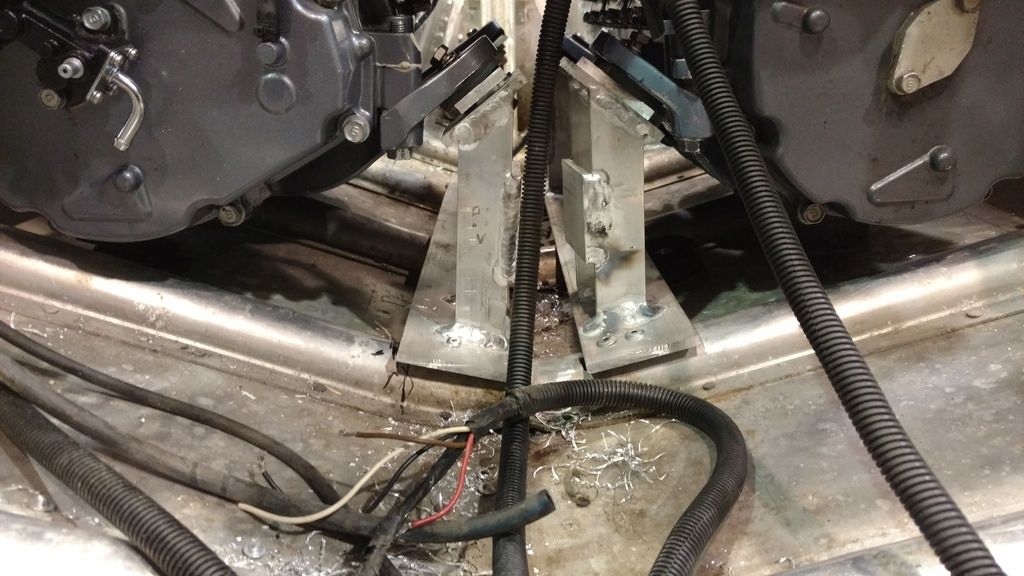After much deliberation and input from you guys, we are going to change the motor mounts. The last few days we have spent a lot of time and pondering on the subject. The idea of getting a horizontal mounting plane is easy but with two engines it is very difficult to get a solution with a limited budget.
After our quiz in our last major thermal class today, our team met up to discuss the dilemma. Everyone's input has helped out in the decision. We took the input of lack of mounting structure with rivets on the ribs and input in a new mount idea (dozerll thank you for the pictures). I have learned from classes that no idea is bad idea. Even the most absurd solutions can have some positive effect on the final outcome.
In our young minds, there is a lot of learning involved with this project and some trial and error. This is definitely our first biggest learning experience. A lot can be conceptualize that sounds like a sound solution but when implemented isn't. This first go was it.
I feel that this picture shows what we were up against. A simple problem with "many ways to skin a cat" for a solution." This is looking the down the keel towards the stern. The multiple angles with the engine cradle and the hull offer difficulty for a simple install. Also, the long struts allow for a lot of movement (deflection) forward and aft. When the engines are bolted to the mounts they are solid but with repeated shock loads, there is a chance with poor welds( I've only been on the torch for a few hours) and potential for rivet creep with the low amount of rivets. This could cause an undesired outcome with motors becoming lose anchors...

No matter the amount of FEA we do on the system, we are uneducated on the potential shock loads that can be subjected to the motors when going over waves and what not. I believe it is something that can be learned with experience and going to a designated marine engineering school; both none of us on the team have. Fortunately, we have this thread and everyone who is participating who have the experience and better know-how.
Two reasons we are going to a new design; unknown effects on current design during service life and alignment issues. The first everyone who has commented with concern understand but the second is something I haven't brought up. With the current design, alignment with the jet pump coupling is done with the engine mounts. As the engine mounts are on an angle, it can be aligned but with lots of confusion since when a shim is added it will the motor up and over with relation to where the shim was added. If the motor is needed to only move horizontally then this is unachievable since the motor will move at a diagonal motion. It isn't a complicated issue but something that is challenging when fabricating skills lack (precision lacks heavily with limited tooling and skills). For mostly of the first reason, we have chose to move on from this.
We are going to incorporate the box mount dozerll had illustrated. We thought about the idea at first but didn't think much about it. We tried to research current implementation but had a tough time finding pictures like the ones dozerll showed (thank you again). Luckily we have a brake press that I used to build the pump boxes that will aid in this fabrication. I will show more about this next week when fabing starts. Our idea is basically the same as what is shown in his but with a common box in the keel area shared with both port and starboard engines.
Dozerll, can you share with me more about the mounts you showed? Where does the wood in the first picture go? On top of the box I assume? What type of material (we are going to use aluminum and I assume what you shared is the same) and what is the thickness?
Again, we really appreciate everything everyone has contributed to this project. It has been an amazing project so far to learn from and the enjoyment is priceless. I look forward to the coming months when we all get to see it make its first big SPLASH with the drive setup.
























